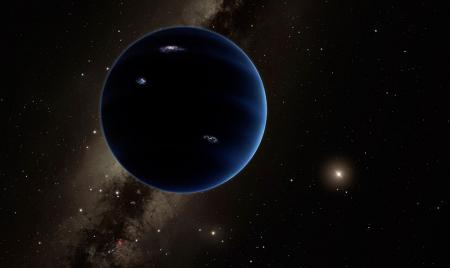
Two years ago scientists from the California Institute of Technology found some evidence, which showed that a larger planet than earth is lurking on the edge of the Solar System. In 2018, an International team of scientists discovered a dwarf planet which has a bizarre orbit that is likely to be influenced by the mysterious 'Planet 9'.
Quanta reported that the co-author of the study Professor David Gerdes, who is also an astronomer at the University of Michigan said, "It's not proof that Planet Nine exists. But I would say the presence of an object like this in our solar system bolsters the case for Planet Nine."
During the research, the astronomers found that the movement of the dwarf planet beyond Neptune, which is known as the farthest planet of the solar system, might be an evidence to the reality of the hypothetical ninth planet. The theorized planet is expected to have ten times the mass of the earth and it may take a very long, eccentric orbit around sun.
Gerdes and his colleagues spotted the new dwarf planet using the data from the Dark Energy project, an International initiative that probes the mysteries behind the expansion of the Solar System.
The dwarf planet, which is known as 2015 BP519, has a very bizarre orbit that's tilted 54 degrees towards the plane of most objects that orbit sun. After seeing this extraordinary orbit, scientists tried to find the origin of this cosmic variation using computer simulations. However, they failed to explain the how the object had ended up in such an orbit.
But when the scientists added the ninth planet in the solar system with the characteristics proposed by the researchers at the Caltech University, it made sense. As the Planet 9 was included in the simulation, scientists found that it is the influence exerted by the giant body, which resulted in the weird orbit of Planet 9.
However, Michele Banister, an astronomer at the Queen's University Belfast told Newsweek that Planet 9 may not be the only factor which is the cause of the object's strange orbit.
"This object is unusual because it's on a high inclination. This can be used to maybe tell us some things about its formation process. There are a number of models that suggest you can probably put objects like this into the shape of orbit and the tilt of orbit that we see today," said Banister.
Two other astronomers from Queen's University Belfast hoping to use dozens of medieval records to solve the modern astronomical mystery of Planet Nine. Live Science reported that Marilina Cesario, one of the leaders of the project has said that earth has a wealth of historical records of comets in Old English, Old Irish, Latin and Russian which have been overlooked for a long time. In addition to that comment the Pedro Lacerda, the other leader of the project stated, "It is fantastic to be able to use data about 1,000 years old to investigate a current theory."
In the meantime, adamant conspiracy theorists have started claiming that this new evidence is pointing fingers to the mysterious killer planet Nibiru which will hit the earth one day, causing massive destruction everywhere.









